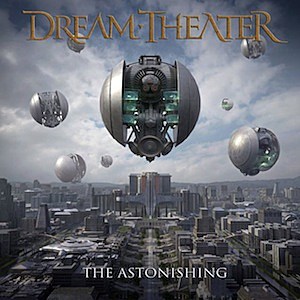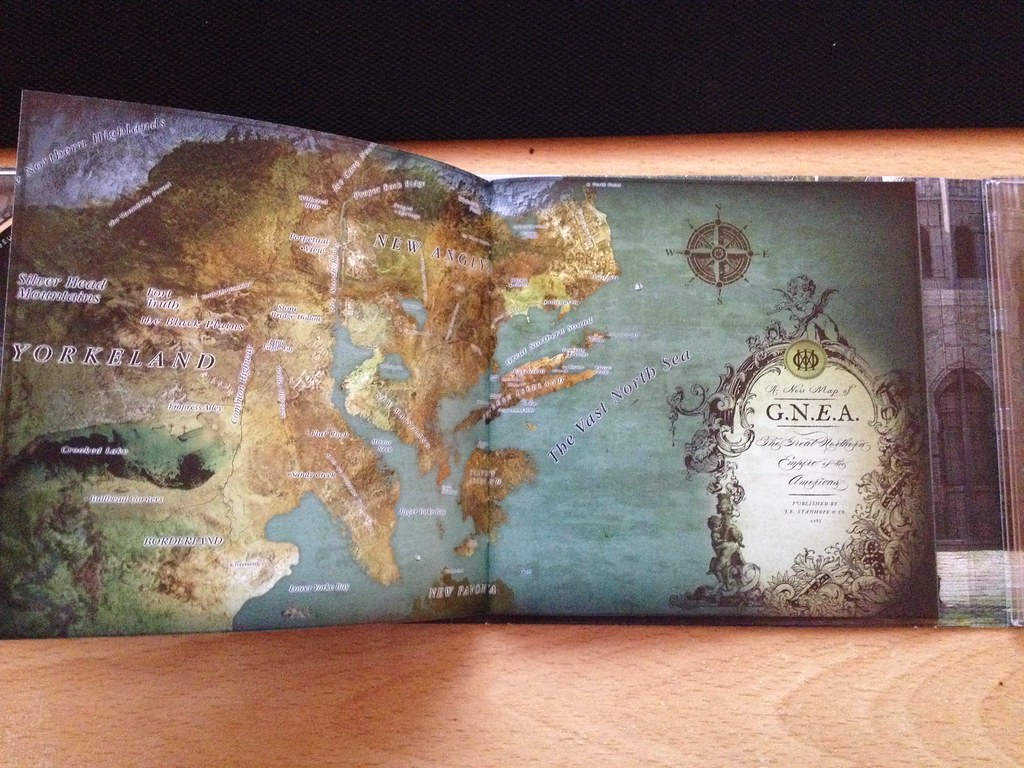Part 1 - Part 2 - Part 3
I decided to do something special this time around: A review of a music album. A long one.
I decided to do something special this time around: A review of a music album. A long one.
I never hid it, I am a gigantic fan of music. I love
all the genres, except country music and the more Death side of the metal
genre. I’ve never been big on growlers, I want to be able to understand what
the singer says – and bands that veer into growling or outright screaming all
the time… yeah, no, sorry. Not my type. I can see why some people enjoy this,
but it’s not my cup of tea. I’ve always enjoyed rock, and then metal came in
naturally, until I discovered Dream Theater and progressive metal. Ever since,
I’ve been hooked.
 |
| Left to right: Jordan Rudess (keyboards), John Myung (bass), James LaBrie (vocals), Mike Mangini (drums) and John Petrucci (electric guitar). |
 |
| Ah, the Majesty Symbol. Best seal of quality ever made. |
The band’s next effort came out on January 2016: The
Astonishing, a two-disc album that is also a rock opera, thus telling a full
story. It’s 130 solid minutes of music, longer than a lot of movies. The
advantage of rock operas is that since they tell a story, you can get into the
plot, identify with the characters, and love it both for the ongoing storyline and the music that accompanies each part of it. Pink Floyd’s The Wall, as an
example, is 81 minutes detailing a singer’s backstory, then showing him
willingly separating himself from the rest of the world, slowly going crazy because of drugs and
almost becoming a fascist, until his own consciousness puts him on trial to make
him tear down his metaphorical wall. The music is excellent and the story,
while flawed (there are some details missing that could have helped
understanding the plot), is still enjoyable. That’s a common issue with rock
operas, really; combining music and story in a little under 80 minutes (or, for
those who dare, in more than 80 minutes over 2 CDs) means that some details, however
vital they may be, could get left out. I'll discuss this later.
The Astonishing also makes use of a full orchestra; to
be precise, the City of Prague Philarmonic Orchestra. Not a first time for
Dream Theater, who have used an orchestra for some of their live releases and
included other symphonic instruments on a few studio tracks, but never before
have they used one for an entire album. As a result, while these discs contain
the mandatory electric guitar, bass, drums, keyboard and vocals, it also puts
some emphasis on the orchestra, peppering most, if not all songs with violins,
trumpets (even bagpipes at one point!)… And, most importantly, a choir to
accompany James LaBrie’s vocals. I would say it’s closer to symphonic metal
than prog metal. For a while now, I’ve tried getting into symphonic metal, and
it’s difficult because some of the most prominent bands in the genre (like
Rhapsody, formerly known as Rhapsody of Fire) tend to tell long stories through
multiple albums, causing a new listener to feel locked out of the continuity
unless they go and binge-listen to the band’s music in a few sittings. Another
issue I have with symphonic metal – at least, the tracks I’ve heard – is that
the mixing results in the orchestra often being nearly buried under the metal
music. It’s called “symphonic metal”, guys, not “prog metal with a side-order
of orchestra in the background”. The “symphony” half has to feel like it’s a
part of the whole thing, it can’t feel like an afterthought. Dream Theater did
especially well in that regard on The Astonishing, leaving plenty of room for
the orchestra and allowing their music to mesh with the progressive metal instruments.
Same goes for James LaBrie’s singing, which never overshadows the choir too
much, although I think LaBrie’s vocals could have been raised a little more on
some songs during mixing of the album. Just a little.
 |
| The Johns of the group usually get to shine together at the front of stage. |
But going back to my earlier point, the danger when
you bring forward a story with your music is that some will analyze it from a
storytelling standpoint. I’ve seen The Count of Tuscany being called corny,
I’ve seen people who hated the ending to Metropolis Part 2, and I’ve also seen
some people who thought The Ministry of Lost Souls was creepy rather than
heartwarming or even tear-jerking. This story was mostly written by John
Petrucci, who inspired himself from epics similar to Star Wars or Game of
Thrones. Can’t be more blatant than that; a medieval-like setting in a
science-fiction future. Forcing a genre into another; it’s like having your
cake and eating it too! Petrucci also mentioned that a major theme of the story
is the automatization of everything; how everything becomes virtual,
everything’s connected (seriously, the Internet of Things… Does my toilet
really need an app and Bluetooth connectivity?), we’ll have self-driving cars,
putting more and more of our lives into the hands of machines… Yeah, it’s a
scary thought. Taking it to the point that technology is the one doing all
entertainment-related things, though, that may be pushing it.
The Astonishing takes place in an alternate history
where the United States turned into a monarchy of sorts, and we follow events
taking place in the Great Northern Empire of the Americas. All entertainment is
produced by flying spherical devices called the Noise Machines (NOMACs for
short). The booklet that came with the album shows that the inside of the NOMACs,
when they’re seen from behind, looks a lot like the interior of the circle in
the Majesty symbol. Nice little touch there. The villagers working under the
totalitarian regime of the royal family cannot create entertainment and don’t
even have time to produce anything. So wait, the Americas are mimicking the
medieval times, and travel with horses, except there are still machines except
the only machines we ever hear about are the NOMACs…. We’re not even into the
plot yet and I’m already confused!
 |
| The highest number of tracks they had on a studio album before this one? 13. Live album? 18. This is 34. |
As for whether or not those tracks are superfluous…
the middle three are, in my opinion. They’re the shortest (the five songs total
about 5 minutes together), but outside of the first one and “Power Down”, there
is not much of a point to them outside of hammering it in that the NOMACs
really suck at music composition. Besides, other tracks, like “A Savior in the
Square” and “The Path That Divides” also contain short moments that could count
as NOMAC music.
 |
| Lord, Emperor? The album doesn't seem to agree on what his title is. |
Arhys then explains that his brother has a fantastic
voice. He’s this close to calling it magic, but he never does. We are supposed
to understand that Gabriel brings music back and has such a marvelous voice
that he can move crowds and rally them to the cause of the Ravenskill Militia…
and that’s about it. It’s unclear whether it’s magic or just a lot of charisma.
And while some authors use this ambiguity to keep some surprises from the
audience, here it’s not handled all that well. There’s also implication that
Gabriel is a “Chosen One”… just the 3912th Chosen One in fiction,
keep ‘em coming, I’m definitely not tired of this cliché at all.
Three songs down, 31 more to go. I'll take a break here and resume this next Monday. In the meantime, I invite you to give the whole album a listen, you can find it on YouTube on Dream Theater's official channel.
Three songs down, 31 more to go. I'll take a break here and resume this next Monday. In the meantime, I invite you to give the whole album a listen, you can find it on YouTube on Dream Theater's official channel.




No comments:
Post a Comment